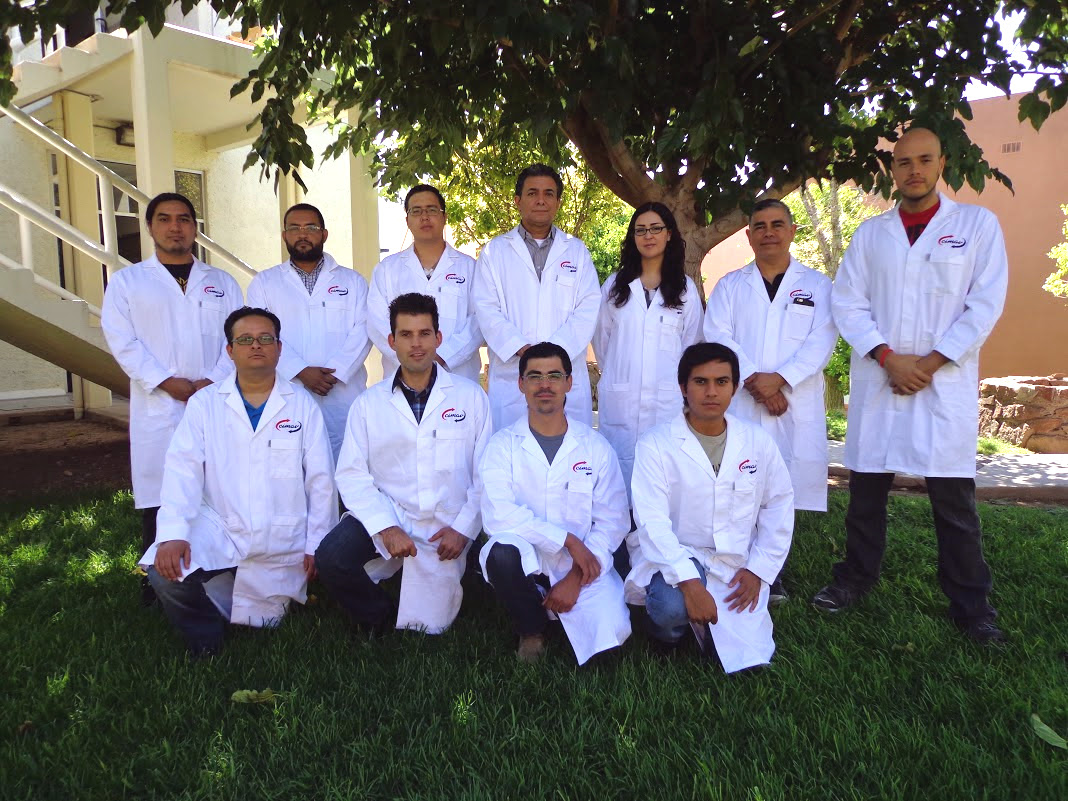Metallurgy and Nanostructures

Within the Department of Metallurgy is the Mechanical Alloy MA Laboratory, this lab includes the five most important metallurgical processes: casting, forging, extrusion, rolling and drawing. In addition, a pillar of the laboratory fields is the development of new materials based on powder metallurgy (pulvimetalurgy). The MA lab has scientific-technological staff dedicated to theoretical and applied knowledge. Within applied research can be cited a large number of projects with regional and national industry that have been carried out. One of the advances in theoretical research is the combination of conventional metallurgy with nanotechnology.
This lab generates both scientific and technological knowledge, which in collaboration with specialists from other disciplines, can be successfully applied in the industry.
Due to the increasingly complex requirements of modern times, metals have evolved the alloy manufacturing processes, shaping and their applications. With the goal of being at the forefront and creating new alloys with excellent mechanical and microstructural properties, as well as improving the mechanical and microstructural properties of commercial alloys; the research in MA lab is aimed to optimize the conditions of manufacture of new alloys by means of innovative techniques that provide a homogeneous mechanical performance.
- In collaboration with the National Aeronautical Industry, it was possible to meet General Electric’s specifications in the manufacture of a turbine component.
- In joint work with the automotive industry, process improvement was achieved and considerable savings were made in production costs in the manufacture of wheels.
- Supported on the advances in applied science, it was possible to obtain a project with the United States Air Force (USAF).
In the MA lab different innovative techniques are created for the manufacture of new alloys, starting from conventional manufacturing processes such as casting and pulvimetalurgy. In addition from adobe mentioned processes, we are also working on the microstructural improvement and mechanical properties increase in some commercial alloys frequently used in the aeronautical and aerospace industries (2024, 7075, 6061, 319 and 356 among others).
Developed research is mainly aimed to fulfill current requirements, namely creation of lighter alloys and composites with good wear and corrosion resistance under different work temperatures. For this, we work on the development of reinforced nanostructured materials with addition of different nature nanoparticles (forming composite materials): CeO2, ZrO2, Al2O3 and different allotropic forms of graphite such as graphene, carbon nanotubes (NTC) and nano graphite particles.
The use of allotropic phases of graphite as a reinforcing material actually is one of the major advances in the design of metallic matrix composite materials. In coordination with the Surface Chemistry and Nanostructured Materials Departments, has been possible to synthesize Al-NTC composite materials, which exhibit excellent mechanical properties without an important increase in their density values.
On the other hand, some composite materials have been synthesized in the MA lab, using various pulvimetalurgy techniques, which have been complemented by mechanical milling to obtain a homogeneous distribution of the reinforcing materials and high grain refinement. The experience generated with the implementation of these processes crystallized in for of two granted patents (US 7,694,713 and MX 277555).
Other aspects that are addressed in the research developed in the MA lab are the composition modification of commercial alloys by the addition of different concentrations of alloying elements, the effect of additions of nanoparticles, composition modification and variations in processing conditions, all of them on the different hardening mechanisms that rule their mechanical properties. The above because the composites and modified alloys are subjected to different processes of forming both at room temperature and under high temperature involving different hardening mechanisms.
From a certain concern for the environment, the MA lab also carries out some research that involve some positive environmental impact, such as the synthesis of graphene-aluminum composite materials. The methodology tested in the lab is based on a low cost and environmentally friendly mechano-chemical route, which avoids the use of corrosive and dangerous reagents. As precursors, natural graphite is used with a mixture of a weak inorganic alkali and an organic acid, as defoliation agents. The equiatomic mixture of components is processed by high-energy ball milling and leached in an aqueous solution, generating a highly defoliated material with presence of individual graphene structures. While the reaction remnants consist of an aqueous mixture of alkaline citrates of no danger that do not require special manipulation for disposal.
The powder metallurgy process always involves sintering. In the MA lab the innovation is a constant goal in each of our developments, an example is a new sintering process. Using induction heating is possible to sinter materials in very short times, reaching densification values very close to those obtained by other more sophisticated techniques such as spark plasma sintering (SPS), with the great advantage that this route is a low cost method, both in investment as well as processing. Normally this technique has been used successfully for the generation of ceramics pieces of high melting point (>1500˚C). In the present the lab is testing the application of this methodology for the generation of composites samples with low melting points (<660°C), this route has been rarely reported in the literature.
- Aluminum-based composites
- Aluminum alloys and their heat treatments
- Ni-based alloys
- Metal coatings
- High-entropy alloys
